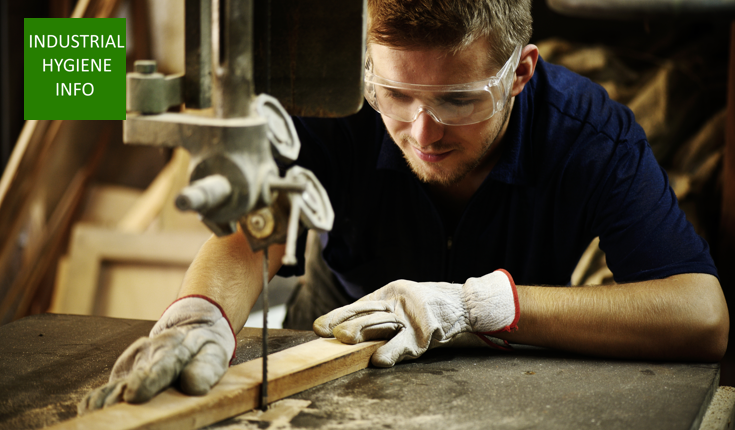Industrial hygiene involves recognizing, evaluating and controlling hazards in the workplace to reduce risks. Read on to learn more about Industrial Hygiene hazard controls can help keep people safe from harm.
Recognition Of Hazards
Recognition of hazards is the first and most crucial step in managing an industrial environment. Industrial hygienists must be able to identify potential physical, chemical, biological, radiation, ergonomic, or psychological hazards that could potentially put workers at risk of injury or ill health.
OSHA regulations require employers to conduct regular workplace hazard assessment surveys to ensure compliance with proper health and safety standards. Normally these are done by Industrial Hygiene professionals.
Learn how to become a certified Industrial Hygiene professional here and access other training programs such as the Fundamentals of Industrial Hygiene.
Employers should also provide proper training for employees on how to recognize potential risks while they are working. Additionally, employers can utilize technology such as walk-through surveys and field monitoring instruments, to accurately detect and measure hazardous exposures within the workplace environment.

Evaluation Of Hazards
Evaluating the level of risk posed by potential hazards is an important step in industrial hygiene. This involves determining the severity and frequency of potential exposure to hazardous substances or conditions, as well as identifying potential health effects that may be associated with these exposures. Industrial hygiene professionals also conduct surveys to determine what types of pollutants are present, evaluate their concentration levels and analyze the effectiveness of current safety controls. Data collected through evaluation can be used to inform decisions regarding workplace safety measures such as engineering or administrative controls, work practices and personal protective equipment (PPE).
Air quality monitoring is a common practice in workplaces, where workers may be exposed to high levels of airborne contaminants such as chemical vapors, dusts or other particles. Through air monitoring, industrial hygienists can identify concentrations of hazardous materials present indoors so preventive actions can be taken before individuals become exposed.
Air sampling data also provides evidence that necessary measures have been implemented after an incident has occurred at the workplace environment. According to the U.S Bureau of Labor Statistics report on fatal occupational injuries for 2021, 40% eye injuries occur in manufacturing, construction and mining industries due to lack of adequate precautionary steps when dealing with hazardous chemicals and materials during work operations.
Surveillance routines must also include noise assessments, in order to monitor long-term risks associated with hearing loss caused by excessive sound levels produced both inside and outside within a working area. Without proper noise level assessment employees may suffer chronic hearing impairments including temporary threshold shifts resulting from repetitive loud noise exposure over time without recovery periods which could lead them into permanent disability overtime if not properly managed. There could be early warning signs indicated in examinations conducted by occupational health professionals specialized on this matter.
The goal therefore is not only implementing appropriate PPE but using engineering solutions whenever possible like enclosures around machines producing sound above permissible values. These values are established by federal agencies such as Occupational Safety & Health Administration (OSHA), as also by other professional bodies such as NIOSH.
Control Of Hazards-Establishing Hierarchy of Controls
Controlling hazards in the workplace is an important part of industrial hygiene practice, and there are several approaches that can be used to reduce or eliminate risk. The most common approach is known as the Hierarchy of Controls: a structured system for assessing and addressing potential risks and their associated sources.
This hierarchy focuses on engineering controls, administrative controls, work practice controls, and personal protective equipment (PPE). Engineering controls include making changes to tools or processes to decrease risk; they may also involve installation of ventilation systems or other safety devices such as guardrails and safety harnesses.
Administrative control systems ensure workers have the information they need to understand how best to minimize hazard exposure through practices like job rotation, limiting hours worked per day/week/month/year as applicable, proper training and use of PPE.
Workplace ventilation is another key area where industrial hygienists use engineering principles to ensure air quality standards are met by controlling pollutants at source–for example using exhaust fans for fume extraction. Finally, individuals must wear appropriate PPE when exposed to potentially hazardous environments; this includes things like face masks for airborne particles or hearing protection for loud noise levels.
Exposure calculations and Ventilation Calculations
Industrial Hygiene professionals must be able to carry out work site analysis, monitoring of hazards and calculations related to exposure, as well as engineering calculations related to the amount of ventilation needed in a work area.
Industrial Hygiene training courses provide training related to carrying out these Industrial Hygiene engineering calculations as well.